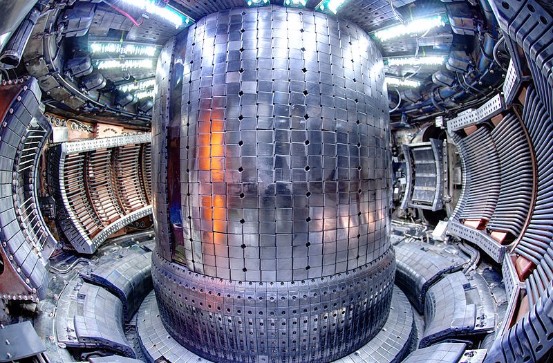
The Weekly Fusion: A Look at Current News in Fusion Energy
Students advancing a future with carbon-free fusion
Peter Dunn/ MIT News / June 17, 2015
Two young researcher are jumping leaps and bounds in the nuclear fusion field, in hopes to one day achieve the ultimate energy dream of fully understanding fusion energy. According to MIT News, two Phd candidates Adam, Kuang and Alex Creely, are looking at trying to fully understand two major questions and problems that arise when dealing with nuclear fusion.
Problem 1: Trying to fully understand plasma turbulence, so that a self-sustaining plasma that will produce more energy than it consumes.
Problem 2: Trying to fully understand the best way to confine the plasma, and to be able to safely extract heat to generate electricity.
New York Energy Week: Fusion Energy Sooner and Cheaper?
Andrew Holland / American Security Project / June 17, 2015
On Tuesday, June 16, 2015 ASP sponsored an event in New York to discuss Fusion Energy. The Director of the MIT Plasma Science and Fusion Center, Dr. Dennis Whyte, discussed a series of breakthroughs that could allow fusion to be possible. The following 3 points were stressed by Dr. Whyte’s seminar.
1st –High Temperature Superconducting magnets used in the construction of the fusion reactor, make the fusion process more efficient and ultimately cheaper and easier to build.
2nd– 3D printing techniques for fusion reactors, keep the cost and construction time down, as the 3D printing can design unusual shapes and designs that would otherwise be impossible.
3rd– A new liquid salt material would surround the plasma, so that it can capture the heat and in fuel production, which would lead to more efficiency for the fusion reactor.
Dr. Whyte explained that fusion reactors could be more efficient, construction costs could be lowered, and the time to construct the reactor could be reduced.
World’s Largest Laser Used to Heat Fusion Fuel to 20,000,000°C
Asian Scientist / June 16, 2015
A research team led by Dr. Yoneyoshi Kitagawa, used the Laser for Fast Ignition Experiment (LFEX) to heat a pre-imploded core by the use of energized ions. From the research findings, it was verified that the ions directly collided with the core plasma successfully. It was from this collision that the electron heated the whole core, while the energized ions deposited their energies in local areas within the core, which leads to the formation of hot spots, which are important for the fuel ignition, in the fusion reactor.
- The researchers were successful in achieving the 20,000,000°C mark, which is on the road to achieving the 100,000,000°C mark, which is required to fully heat the plasma, so that sufficient energy can be obtained and extracted.
- The researchers have contributed to the understanding and the knowledge on the ignition of fusion fuel, which is only briefly understood.
Fusion researchers use Titan supercomputer to burst helium bubbles
Eric Gedenk/ PHYS.org / June 10, 2015
The researchers discussed in this article are trying to rapidly find an applicable diverter (device within the tokamak that allows the removal of waste material from the plasma), that would work well at high temperatures. A good diverter has to be a heavy metal (tungsten), with a high melting point and vaporization point that will not be affected by the plasma that is flowing through the tokamak fusion reactor.
Why is the interaction between the Tungsten and the Plasma so Important?
Learning and understanding the evolution of helium bubbles is important, because during the bombardment of the helium particles to the tungsten wall, clusters are often formed. These clusters can eventually, if allowed to get large enough, actually “knock out” a tungsten atom, thus forming cavities and holes, which in turn produces fuzzy roughness and eventually reduces the durability of the diverter material (tungsten), and would eventually led to energy inefficiency.





